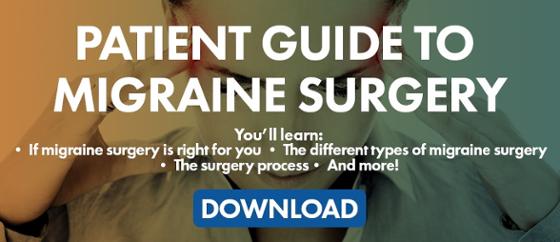Carpal tunnel syndrome and migraines are both serious, debilitating conditions that cause pain and distress in sufferers. Both are also recurring, and require treatment throughout the patient’s life. Until now, however, a direct link between the two has never been established.
A recent study now indicates there may actually be significant correlation, and that if you suffer from one you’re more likely than other people to develop the second at some point in your life.
What is Carpal Tunnel Syndrome?
If you occasionally experience numbness or pain in the wrist or hand, you may be suffering from carpal tunnel syndrome. It is a condition caused by constriction or pressure of the median nerve in the wrist. This nerves affects sensations in the thumb, index and middle fingers but not the little finger. If your little finger feels okay but other fingers are affected, this may be a sign you should check out whether your carpal tunnel is affected.
Other symptoms include:
- Pins and needles in the hand
- Aching sensation in the forearm
- Increasing pain when you grip something
- Stiff fingers in the morning
Migraine Causes and Symptoms
Doctors still don’t know exactly what causes migraine headaches, although specific triggers are well documented and diverse, ranging from certain food types to hormone levels and monthly cycles. Not all sufferers report the same triggers, however, and the condition is complicated even more by the different types of headache--in terms of both severity and duration.
What is typical for most patients, however, is that the pain can be both debilitating and frightening. Here are some of the most common symptoms associated with migraine type headaches:
- Pounding, throbbing pain
- Blurred vision
- Feeling very warm or very cold
- Dizziness
- Sensitivity to light, noise or even smells
- Nausea and vomiting or abdominal pain
- Flashing lights or bright spots in vision
Migraine headaches fall into different types, last for different amounts of time and affect different areas of the body. They can also fall into recognizable patterns, with cluster headaches for instance often occurring at predictable times of the day or month, and sinus headaches causing deep pain in cheekbones, nose or forehead.
The Links Between the Two Conditions
So, let's take a look at the links between migraine headaches and carpal tunnel syndrome. The study that revealed a possible link between them was carried out via a survey of almost 26,000 Americans who responded to a national health study back in 2010.
Dr Huay-Zong Law, along with other associates from the University of Texas Southwestern Medical Center, discovered a high percentage of respondents who reported suffering from both conditions. After adjusting the findings for other health-related factors, the research revealed:
- Migraine - 34 percent of sufferers had CTS (carpal tunnel syndrome) compared to 16 percent without CTS
- Carpal Tunnel - 8 percent of sufferers also had migraines, compared to only 3 percent who did not have migraine headaches
These numbers indicate that the chances of suffering from migraine if you have carpal tunnel are 2.6 percent higher, and if you have migraine you are around 2.7 percent more likely to suffer from CTS.
There are other shared risk factors between the two conditions, too. In both, females are more at risk than males, with other shared factors including diabetes, smoking and obesity.
It’s interesting to note that some sections of the community are less likely to suffer from either, with Hispanics suffering fewer instances of carpal tunnel and Asians reporting that both conditions were less common.
The study revealed age differences between the sections of community most likely to suffer from either condition, with older people more susceptible to carpal tunnel, and younger people suffering from migraines.
Nerve Compression
Some migraine patients respond favorably to surgery that releases pressure on nerves in the head or neck, although this isn’t something that is suitable or effective in all migraine sufferers. Since carpal tunnel is a compressive neuropathy, caused by pressure on the median nerve in the wrist, the theory that migraine is also caused by nerve pressure indicates there may be a link.
One of the points made by the authors of the report is that migraine in younger patients may sensitize the central nervous system, which then leads to pain later in life from carpal tunnel.
It’s important to realize that the discovery of a possible link does not necessarily mean that having one condition will automatically lead to you developing the other.
While Dr Huay-Zong Law and the co-authors of the report state that the two conditions may share common risk factors, they call for more research to determine the likelihood of one condition leading to the other. If a definite link could be determined, earlier diagnosis of CTS along with prevention and/or treatment could be possible amongst migraine headache sufferers.

